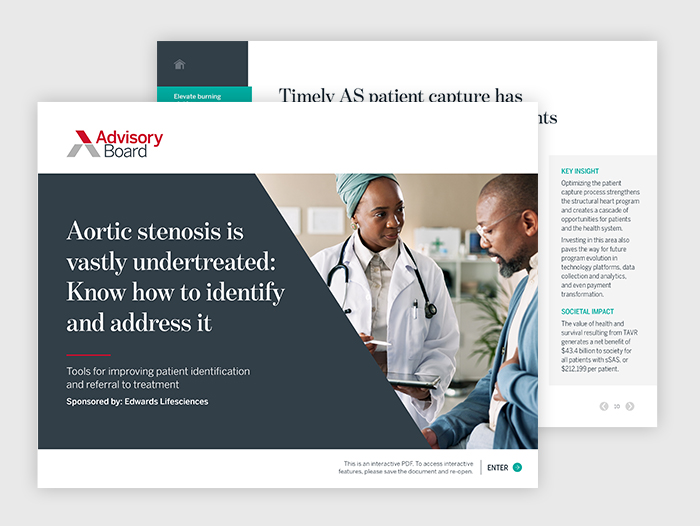Although racially motivated redlining was outlawed decades ago, the policy still has a lingering impact on people's health today. In a new study, researchers found that people living in historically redlined neighborhoods had a higher risk of adverse cardiovascular events, as well as death from all causes, Ambar Castillo writes for STAT.
How redlining has negatively impacted health
In the 1930s, the United States began categorizing neighborhoods based on the racial and ethnic backgrounds of its residents, a practice known as redlining. Areas where many people of color lived were considered high-risk for mortgage lenders, and the policy led to "further housing segregation and decades of disinvestment in health care, schools, and other basic services and infrastructure, taking a disproportionate toll on Black communities," Castillo writes.
Although redlining was officially discontinued in the 1940s, it still negatively impacts many marginalized communities today.
In a new study published in JAMA Network Open, researchers analyzed data from around 80,000 U.S. veterans who lived in areas that had been categorized in the 1930s by the Home Owners' Loan Corporation and had received care for coronary artery disease, peripheral vascular disease, or stroke between 2016 and 2019.
The researchers followed the participants for a median of four years to see whether they had an adverse cardiovascular event. They also adjusted for several different factors in their analysis, including age, sex, race, baseline health, pollution, and neighborhood deprivation.
Overall, participants who lived in historically redlined neighborhoods had a 13% increased risk of dying from any cause and a 14% increased risk of having a major adverse cardiovascular event compared to those who lived in historically white, wealthy neighborhoods.
Although the researchers noted that their findings may not be generalizable to non-veterans, they said that focusing on veterans helped reduce the biases in general population data, which typically excludes uninsured individuals. In comparison, all veterans have access to healthcare through their Veterans Affairs insurance, regardless of income or employment status.
"Redlining happened … almost a century ago, and we're showing that it still has implications, and it should give us pause," said Sadeer Al-Kindi, one of the study's lead authors and a researcher from Harrington Heart and Vascular Institute at University Hospitals and Case Western Reserve University. "Because now, when we put policies — especially policies that are related to segregation, gentrification, anything like that where it talks about remapping areas — this may have a long, lasting legacy of health impacts, specifically on cardiovascular [health]."
Commentary
According to Castillo, the JAMA study builds on similar research that also shows how redlining has impacted health in smaller geographic areas. This includes an April 2023 investigation on how redlining contributed to stroke risk in New York City and a national study that found redlining increased the risk of adverse cardiovascular outcomes at the neighborhood level.
In general, researchers have found that historically redlined neighborhoods continue to have worse health outcomes and lower environmental quality compared to wealthier neighborhoods.
In the 1930s, "[redlined] Grade D neighborhoods were poorer, had more industry and pollution, lower quality housing, and immigrant populations and Black individuals," said Joan Casey, an adjunct assistant professor at Columbia University Mailman School of Public Health, who was not involved in the study. "Redlining helped solidify structural racism and prevented wealth accumulation (via home ownership) in specific communities. That can still affect health today."
In addition, Mahasin Mujahid, head of epidemiology at the UC Berkeley School of Public Health, said the study was noteworthy because Black Americans already face disproportionately high rates of cardiovascular issues. "To truly understand the long-lasting effects of slavery and its aftermath, which include discriminatory policies like redlining, we must delve into the intergenerational impacts," she said.
According to Al-Kindi, countering the lingering effects of redlining will need creative policies, as well as on-the-ground initiatives. Although providing patients with better access to food or planting trees in disadvantaged neighborhoods help, larger solutions are also needed.
"This paper is so exciting because it tries to capture structural barriers, long-term historical factors we need to account for, or we could make things worse than they already are," said Hayden Bosworth, a professor of population health sciences at Duke University School of Medicine who co-authored a commentary on the study. "If you think about it, generation after generation, we know that wealth accumulates. The equivalent is that if generation after generation keeps lacking resources, it keeps on building and building, and makes it that much harder to get out of the hole." (Castillo, STAT, 7/13)
Health plans have made some high-profile investments to address the social determinants of health (SDOH) in the last few years. Advisory Board partnered with Optum Advisory Services' Center for Health Equity to produce a market scan of the investments plans are making to address the SDOH. Read on to find out the key takeaways.
Don't miss out on the latest Advisory Board insights
Create your free account to access 1 resource, including the latest research and webinars.
Want access without creating an account?
You have 1 free members-only resource remaining this month.
1 free members-only resources remaining
1 free members-only resources remaining
You've reached your limit of free insights
Become a member to access all of Advisory Board's resources, events, and experts
Never miss out on the latest innovative health care content tailored to you.
Benefits include:
You've reached your limit of free insights
Become a member to access all of Advisory Board's resources, events, and experts
Never miss out on the latest innovative health care content tailored to you.
Benefits include:
This content is available through your Curated Research partnership with Advisory Board. Click on ‘view this resource’ to read the full piece
Email ask@advisory.com to learn more
Click on ‘Become a Member’ to learn about the benefits of a Full-Access partnership with Advisory Board
Never miss out on the latest innovative health care content tailored to you.





